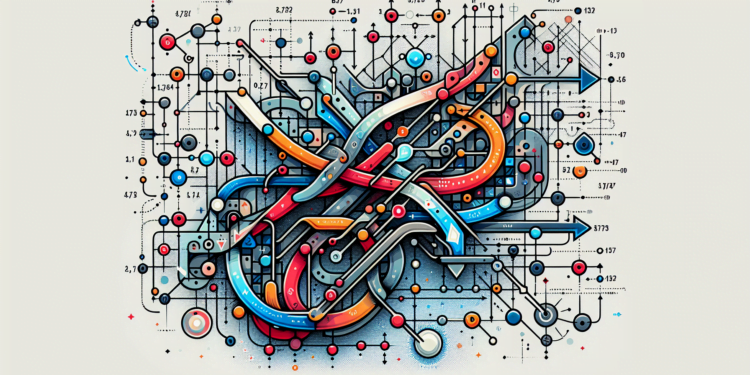Artificial intelligence (AI) is characterized by the integration of various algorithms and mathematical techniques that endow machines with learning and prediction capabilities. Among these techniques, one that stands out for its applicability and theory is Markov Chains. This article aims to unravel the theory underlying Markov Chains and explore their practical implementation within the current AI landscape, as well as speculate on where their evolution might head.
At its core, a Markov Chain is a stochastic model that describes a sequence of possible events in which the probability of each event depends only on the state reached in the previous event. Andrei Markov, a Russian mathematician, pioneered the study of these processes, and they have since found application in fields as diverse as finance, gambling, thermodynamics, and of course, AI.
To deeply understand the workings of Markov Chains, it is necessary to become familiar with some of the terms and concepts that are part of their mathematical architecture:
State: Within a Markov Chain, a state is a configuration or position that the system being modeled can assume. States are usually enumerated and finite in most practical applications.
State Space: This is the set of all possible states the system can take.
Transition: Refers to the change from one state to another. Each possible transition has an associated probability, and the set of these probabilities for all possible state changes forms the so-called transition matrix.
Transition Matrix: A square matrix that contains the probabilities of transition between each pair of states in the model. The sum of the probabilities in each row of the matrix must always equal 1.
Markov Property (memoryless): This refers to the key feature that the prediction of the next state depends solely on the current state and not on the sequence of events that preceded it.
The AI world has leveraged Markov Chains to develop machine learning algorithms such as Hidden Markov Models (HMMs) and Markov Decision Processes (MDPs). These models have been successful in areas like natural language processing, where HMMs are used for tasks such as part-of-speech tagging or speech recognition. They have also proven to be powerful tools in the field of robotics, for defining decision strategies in uncertain environments, and in reinforcement learning, where they are used to optimize decision-making based on rewards.
An illustrative case of the application of Markov Chains is Google’s PageRank algorithm, which was used to rank web pages in search results. PageRank can be seen as a Markov process, where the states are web pages and transitions are links from one page to another, with the transition probability proportional to the importance of the destination page.
Looking ahead, Markov Chains continue to be relevant in AI research and development. Researchers are focusing on greater integration of AI techniques, such as deep learning, with Markov Chain-based models. This could result in algorithms that are more accurate and efficient in handling temporal sequences of data.
In conclusion, Markov Chains offer a robust mathematical framework on which data scientists can rely to model decision-making and prediction processes in intelligent machines. As the field of AI continues to expand and seeks ways to handle complex systems and sequential data, Markov Chains are sure to remain an essential component of its toolkit. The key to future advancements and applications lies in continued innovation in incorporating Markov Chains within more complex structures and advanced AI systems while maintaining the rigorous mathematical foundation that ensures their reliability and effectiveness. The AI frontier moves forward, and Markov Chains continue to be an integral part of its evolution.






















